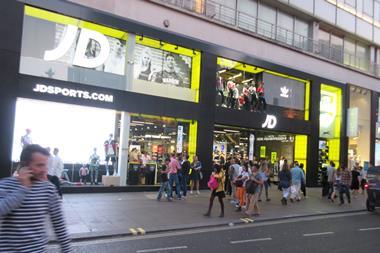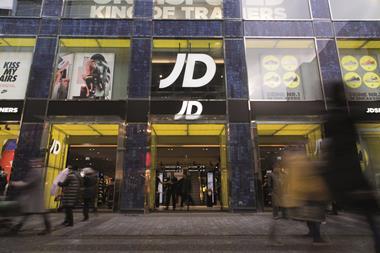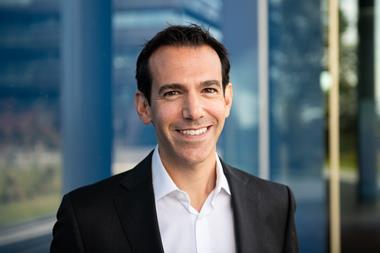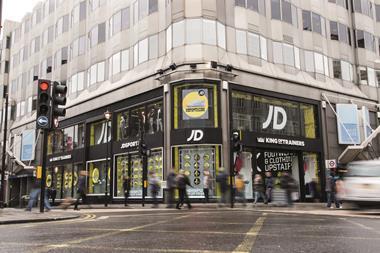JD Sports boss Peter Cowgill tells Retail Week why the retailer’s latest $495m acquisition has set it up to crack America.
JD Sports has snapped up Baltimore-based retailer DTLR – formerly known as Downtown Locker Room – marking the latest step in its ongoing quest to conquer the US sports fashion market.
The swoop for the chain, which operates 247 stores across 19 states, primarily on the East Coast, completes a hat-trick of major US acquisitions by JD Sports in as many years – it bought Finish Line in 2018 and Shoe Palace last December.
JD Sports boss Peter Cowgill said the deal was the missing piece in the puzzle for the sports fashion operator to achieve its ambitions in the US.
“This is a monumental period in the development of JD Sports as a business”
Peter Cowgill, JD Sports
“We now have Shoe Palace on the West Coast, DTLR on the East Coast and JD Sports rolling out in the centre of the country, which means we are pretty much derisked in the US,” Cowgill suggests.
“It is the biggest sportswear territory in the world, so we needed to have a strong presence there – this is a monumental period in the development of JD Sports as a business.
“I think, historically, JD’s achievements have flown under the radar in terms of the global expansion of a UK company, but it’s a very strong achievement to have been able to successfully develop into these territories and be so sought-after in terms of other international territories as well.”
Others, of course, have tried and failed to crack America in the past. Britain’s biggest retailer Tesco was perhaps the highest-profile casualty – the grocer pulled out of the US in 2013, seven years after launching its Fresh & Easy concept.
Dixons’ ill-fated acquisition of Silo, the business it sold in 1992, was another disastrous foray across the pond, while Topshop closed all of its US stores in 2019 after filing for bankruptcy protection in the States.
Cowgill, however, is employing contrasting tactics. He believes JD’s latest acquisition gives the group sufficient geographical coverage and variety in its US portfolio to observe how different demographics are responding to its proposition and tweak its offer accordingly.
Buying up three major businesses also means JD Sports’ success in the US is not tied to the fate of one individual business – something that has tripped up UK operators’ Stateside ambitions in the past.
DTLR may not have been on the radar of many UK retail operators before today, but the acquisition has been a long time coming for JD Sports.
Cowgill tells Retail Week he has been in conversations with the business for eight years. On one occasion, he flew to and from New York in a single day for a three-hour meeting with the company’s management team.
He believes this level of commitment to and knowledge of its acquisitions has set JD Sports up for success in the US where others have failed.
“We operate with a number of the same brands across our global portfolio and are very close to our branded partners as a result,” Cowgill says.
“We also really dig into any business that we acquire – you would not believe the level of detail we go into in terms of understanding the operator, management and banner under which they operate. This is not a flash in the pan acquisition for us; it’s been a long time coming.”
So what are the factors that ultimately convinced Cowgill to add DTLR to JD’s growing stable of international businesses?
Firstly, DTLR’s store portfolio of street-focused locations offered a point of difference to JD Sports’ existing portfolio, which is more heavily focused on shopping centre locations.
Of the chain’s 247 stores, 180 are located on streets. Cowgill believes this plays a part in DTLR’s strong connection with the communities in which it sells, with a strong representation of Black shoppers in its core demographic.
As well as stocking sought-after brands such as Nike Jordan and Adidas, the retailer has a strong offering in categories such as men’s denim – something that will offer JD the opportunity to expand into more traditional fashion categories.
The retailer’s existing co-chief executives Glenn Gaynor and Scott Collins, both of whom have been with the business for 20 years, will remain in post, as will the company’s 3,000-strong workforce.
“The business has a strong DNA, which resonates very well in the areas that it is in today”
Peter Cowgill, JD Sports
“They are a very community-driven business and have a high level of market ownership in the areas they operate in,” Cowgill says.
“We’d never convert these stores into JDs because they have a strong presence in their local communities and employ from them directly.
“The business has a strong DNA, which isn’t something that we would replicate across the USA as a whole, but it resonates very well in the areas that it is in today.”
JD Sports acquired DTLR from private-equity firms BRS & Co and Goode Capital. While Cowgill is confident that more opportunities will arise for retailers to buy businesses from private equity in the US, he insists JD has completed its American spending spree – for the time being, at least.
By snapping up a stable of smaller retailers with strong local connections, JD Sports can combine its deep brand portfolio with a localised offer to take a substantial bite out of the American sports fashion pie.


























No comments yet